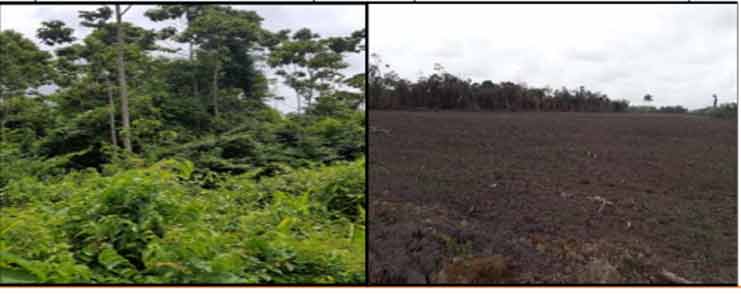Agricultural, other developments changing village for the better
THE Rural Agricultural Infrastructure Development (RAID) project is being viewed as one of the major developmental plans being undertaken by the Government of Guyana (GoG). The village of Ithaca on the West Bank of Berbice, Region Five is positively feeling the effects of it. The total investment cost for this area is G$337 Million.
The Project Coordinator of the Agriculture Sector Development Unit (ASDU), Mr. Khemlall Alvin, revealed to the Pepperpot Magazine that according to the project document of the Ministry of Agriculture (MoA), “The government has identified the communities of Buxton, Mocha, Triumph and Ithaca for urgent intervention because over the last three decade has regularly experienced severe flooding of the farmlands due to extreme storm events and inadequate drainage system.”

He further indicated that through an assessment done, along with consultation with the residents of these areas, evidence clearly showed that the majority people within the communities are willing and ready to “return to farming of these abandon lands provided that there is an improvement in the existing drainage and irrigation system to adequately drain excess water during storm events and avoid significant damages in crops and livestock.”
Vital component
The advancement of the agricultural sector is imperative towards the general development of the people and especially, “in the plan for reducing poverty.” Pressing forward with this view, it stated that some of the strategies offered include improving management, infrastructure, agricultural technology, access to credit by small farmers, diversification and rehabilitating and maintaining drainage and irrigation systems, as well as farm-to-market roads.
In order to ensure a proper commencement and sustainability of such a project, a loan agreement to the value of US$12,432,236 was signed by the government and the CARICOM Development Fund (CDF). This amount, it is hoped, would assist in the mitigation of some of the problems that may be encountered.
The loan arrangement is divided into two components and so far most of the work being done is under the first component. This includes rehabilitation of drainage and irrigation systems within the four project areas, as well as land preparation such as ploughing and chipping. So far, most of these projects have already been completed.
In the case of Ithaca the activities completed from the above-mentioned projects so far included 7.52 Km of new irrigation canals; the excavation and rehabilitation of primary 14 Km of drainage channels; the construction of three irrigation structures; 12 fair weather dams were rehabilitated; the preparation, which included ploughing and chipping of 100 acres of land has already been completed.
Farmers grant
There is also a subcomponent that comprises of the Institutional Strengthening and Farmers Grant, that involves a budgetary allocation of G$80,000,000 (US$650,000) and this amount is currently being implemented across the four villages.
In this case, technical and extension services will be provided to the farmers by the Guyana Livestock Development Authority, the National Agriculture Research and Extension Institute and the Guyana Marketing Cooperation.
Additionally, four one-acre demonstration farms will be established in the four project areas by June 2019. Further, each registered farmer will receive a Grant of up to G$50,000 (US$250) in planting materials and farming implements.
Operations and maintenance
In the phase two component of the RAID project excavators, bulldozers, tractors and framing implements are some of the heavy equipment that will be purchased in order to facilitate the rehabilitation work. It will also help to enhance the capabilities for the rehabilitation of drainage and irrigation system under the National Drainage and Irrigation Authority (NDIA).
Very mindful of the operations and maintenance of the RAID machinery, the MoA has stated, “The equipment will be under the responsibility of the NDIA. The NIDA will build on the works completed by the RAID project by seeking to employ members of the existing Cooperatives and Neighbourhood Democratic Council for the maintenance of the canals, drains and access dams within the four project areas. Financing for this maintenance comes primarily from annual government appropriations.
The project, which was implemented by the Agriculture Sector Development Unit, Ministry of Agriculture in December 2016, has an ending date of June 2020.



.jpg)








